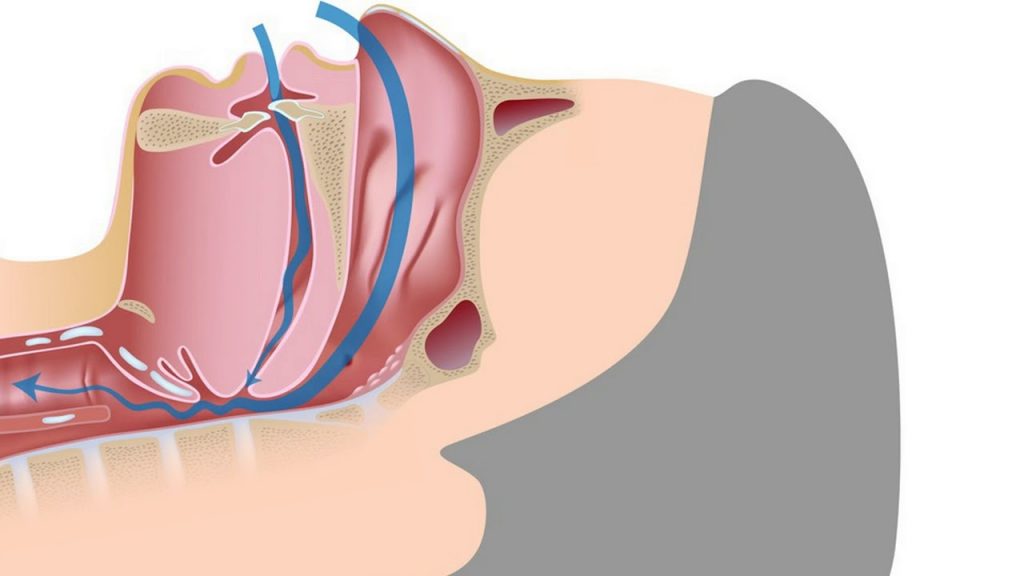
What is obstructive sleep apnea?
OSAS (Obstructive Sleep Apnea Syndrome) is a serious breathing disorder. It causes breathing to stop repeatedly during sleep. But even during the day, the obstruction (narrowing) is in the upper airways, hindering proper breathing.
There are several types of sleep apnea, but the most common is OSAS. This type of apnea occurs when the muscles in the jaw temporarily relax, collapsing the airway and partially blocking it completely. A noticeable sign of OSAS is snoring.
How is OSAS treated?
There are a few forms of therapy for OSAS. The gold standard involves the use of a CPAP breathing device, which uses positive pressure to keep your airway open while you sleep. You continue to breathe on your own, but you feel much more resistance when you exhale. Another option is a dental splint, which allows you to push your lower jaw forward while you sleep. To cure OSAS, it is necessary to eliminate the cause. Usually, the cause is a recession of one jaw or even both jaws. Sleep apnea surgery can eliminate the cause, thereby widening the upper airway and eliminating both sleep apnea and snoring.
What are signs and symptoms of OSAS?
- Excessive daytime sleepiness
- Loud snoring
- Respiratory arrests during sleep
- Abrupt awakening accompanied by gasping or choking sensations
- Dry mouth or sore throat
- Morning headache
- Difficulty concentrating during the day
- Mood swings such as depression or irritability
- Sleep apnea Hypertension
- Night sweats
- Decreased libido
When should a doctor be consulted for OSAS?
Contact a doctor if you notice the following about yourself or if your partner observes the following:
- Snore loud enough to disturb your sleep or that of others
- Waking up gasping for air or gagging
- Intermittent pauses in breathing during sleep
- Excessive daytime sleepiness, which can cause you to fall asleep while working, watching TV, or even while driving
Most people don't really see snoring as a sign of a serious condition. Also, not everyone who snores automatically suffers from OSAS. Nevertheless, if snoring is very loud, a polysomnography should be performed to rule out OSAS.
So be sure to talk to your doctor if you notice loud snoring in yourself, especially snoring that is interrupted by pauses in breathing. With OSAS, snoring is usually loudest when you sleep on your back, and it gets less when you turn to your side.
Excessive daytime sleepiness may be due to other conditions such as narcolepsy.
What are risk factors for obstructive sleep apnea?
Anyone can develop obstructive sleep apnea. However, certain factors put you at increased risk, including:
- Obesity: Most, but not all, people with OSAS are overweight. Fat deposits around the upper airway can interfere with breathing. However, not everyone with obstructive sleep apnea is overweight and vice versa. Thin people can also develop the disorder.
- Narrowed airways: The main cause of OSAS is narrowing in the upper airways. The term obstruction describes this very well. In the vast majority of cases, the cause of narrowing is the recession of the upper and/or lower jaw. Enlarged tonsils can also block the airways and thus cause constrictions.